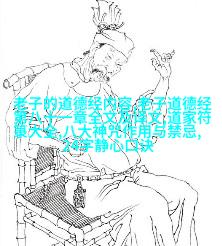Essentialism in the Pursuit of Simplicity: A Critical Examination of 'Big-Chi' Philosophy in the Age of Complexity

The pursuit of simplicity has been a timeless theme across various disciplines, from philosophy to design. The concept "大道至简" (dà dào zhì jiǎn), which can be translated as "the great way is simple," embodies this idea. In this article, we will delve into the meaning and significance of "大道至简" and explore its implications for our understanding of complexity in modern society.
1.1 Meaning and Significance

The phrase "大道至简" originates from Laozi's Tao Te Ching, one of the foundational texts of Daoist philosophy. It suggests that the ultimate reality or truth (the "big way") is not complicated but rather straightforward and uncomplicated. This principle is central to Daoist thought, advocating for a natural order that operates without artificial constraints or unnecessary embellishments.
1.2 Essentialism

In contemporary discourse, essentialism refers to the belief that there are fundamental truths or qualities inherent to individuals or objects that cannot be changed by external factors such as culture or context. This perspective aligns with the idea behind "大道至简," positing that true essence lies beneath superficial complexities.
1.3 The Age of Complexity

We live in an era characterized by rapid technological advancements and interconnectedness on a global scale—what some might call an age of complexity. With information at our fingertips and constant connectivity, it becomes increasingly difficult to discern what truly matters amidst endless possibilities.
2 Minimalist Design: An Application Of 大道至简

Designers have long recognized the value in embracing simplicity while maintaining functionality—a concept closely related to 大道至简 principles.
2.1 Designing For Clarity
Minimalist design seeks clarity through minimal visual elements while retaining usability—this approach resonates with big-chi thinking because it emphasizes substance over appearance.
2.2 Streamlining Functionality
By stripping away unnecessary features and focusing on core functions, minimalist designs promote efficiency—a direct application of simplifying complex systems like those found in modern technology products.
3 Simplifying Complex Systems: Lessons From Nature
Nature offers valuable lessons on how to simplify complex systems through elegance and efficiency:
3.1 Biomimicry And Optimization
Biomimicry involves imitating nature's solutions when solving human problems; it often leads us down paths toward simpler yet more effective solutions.
3.2 Evolutionary Adaptation
Species adapt best when they focus on their core strengths; similarly, organizations thrive by concentrating on their unique competencies rather than spreading themselves too thin.
4 Embracing Big Chi In Modern Life
While living according to big-chi principles may seem challenging given today's fast-paced world filled with distractions,
4a Applying Principles To Daily Life
applying these principles doesn't mean abandoning progress entirely but rather learning how not only appreciate but also apply them effectively within our own lives:
4b Cultivating Mindfulness And Intentional Living
Cultivating mindfulness allows us better understand what truly adds value while intentionally prioritizing experiences aligned with personal values results in meaningful life choices
5 Conclusion: Navigating Complexity Through Simplicity
Navigating an increasingly complex world demands we embrace simplicity as much as possible without sacrificing effectiveness—the spirit embodied by 大道至简and essentialism alike.
In conclusion,
our abilityto recognize then cultivate inner strength based upon genuine values will serve us well amid ever-evolving challenges.
End
